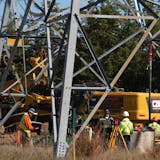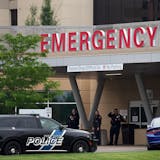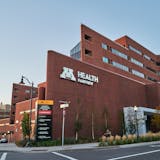WASHINGTON — Vanessa Goodthunder's drive to be the first in her family to graduate college comes from a simple image: her mother's hands, permanently stained by chemicals from years of being a housekeeper.
On Thursday, Goodthunder, a member of the Lower Sioux tribe in Minnesota, was "on cloud nine," as she gathered with more than 1,000 of her peers at the first White House Tribal Youth Gathering.
A rising senior at the University of Minnesota, Goodthunder said she feels called to make her voice heard. "Minnesota is a Dakota word," she said. "Minnesota's history is our history."
The tribal summit builds off President Obama's Generation Indigenous effort, launched in December after he and the first lady visited the Standing Rock Sioux reservation on the border between North and South Dakota. Following that came plans to improve education and employment opportunities for Indian youth and a national network was formed, with tribal youth chosen as ambassadors. Discussions at the summit focused on economic opportunity, education and cultural and other issues.
Across the country, nearly one third of young American Indians live in poverty, according to federal statistics. They have the highest suicide rates of any ethnicity in the U.S., as well as the lowest high school graduation rates. In Minnesota, less than half graduate high school.
The first lady told the youth ambassadors they should "draw strength" from knowing their customs, values and discoveries are "at the heart of the American story" and have shaped U.S. history for centuries.
"Everyone in this room has your back," Michele Obama said. "Everyone who is speaking at this summit, all those Cabinet secretaries, all those powerful people who have come here for you, they have your back. And you definitely have a president and first lady who have your back."
Goodthunder, who was giddy about receiving a hug from the first lady, called the event a great opportunity to meet other Indian young adults and hear their ideas.


